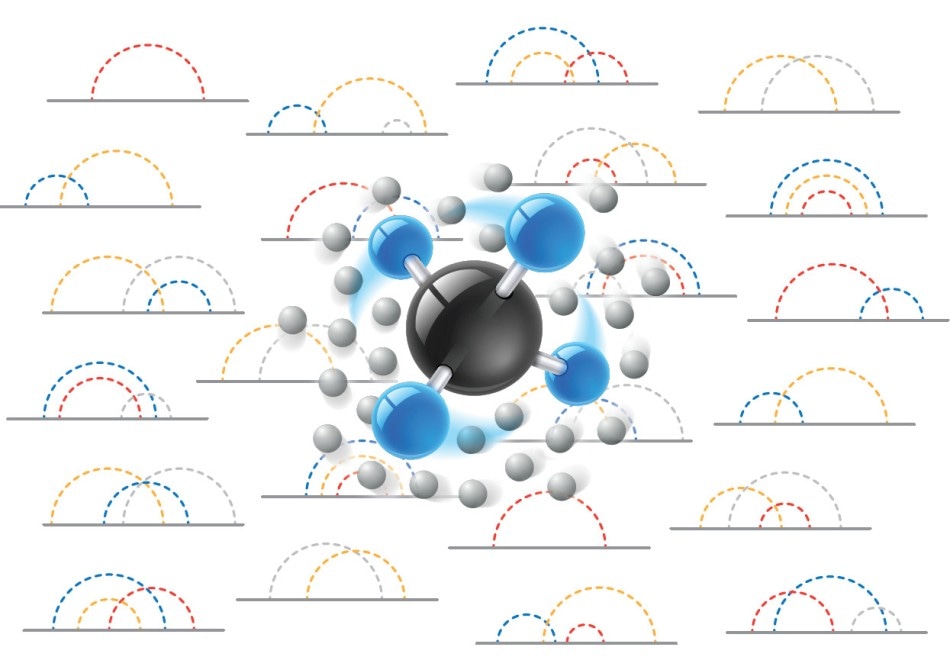Dec 24 2018
In condensed matter physics, Feynman diagrams are a robust tool. The method involves converting highly complex equations into sets of simple diagrams, thereby establishing itself as one of the brilliant tools in the toolbox of a theoretical physicist.
 Feynman diagrams can now be used to describe molecules in solvents. (Image credit: IST Austria/Birgit Rieger)
Feynman diagrams can now be used to describe molecules in solvents. (Image credit: IST Austria/Birgit Rieger)
At present, Giacomo Bighin, a postdoc in the team of Mikhail Lemeshko at the Institute of Science and Technology Austria (IST Austria), has come up with extended use of the Feynman diagram method: originally developed for subatomic particles, the simplest objects conceivable, the method can now be applied to molecules, much more complex objects.
It is expected that the study, which was reported in the Physical Review Letters journal, will dramatically simplify the explanation of molecular rotations in solvents. Thus, researchers have got one step closer to their long-term aim of perceiving chemical reactions in solvents at the microscopic level and, prospectively, controlling them.
At times, when researchers get stuck on a problem, the solution could be closer than expected, for example, in a different area of the research field they are working in. However, it is hard to think across disciplines and needs an ideal combination of expertise and an environment that nurtures such interdisciplinary collaborations. Giacomo Bighin, a condensed matter physicist, experienced such an atmosphere at IST Austria when he joined the team of Mikhail Lemeshko, a molecular physicist. The outcome is an innovative technique for molecular physics—a technique that can considerably enable the explanation of rotating molecules in solvents and opens the door for eventually controlling their reactions.
Molecules always rotate, and how they interact with one another depends on their relative orientation. That is, if they hit another molecule with one end, it has a different effect than if they hit it with the other end.
Mikhail Lemeshko, Molecular Physicist, IST Austria.
Although it has already been possible to control the orientation of molecules and hence chemical reactions in experiments on molecular gases, it is highly difficult to achieve the same in solvents. Mikhail Lemeshko and his team have been working toward achieving this long-term aim, one step at a time. The current step they have taken is related to being better able to explain the rotation of a molecule in a solvent—a prerequisite for ultimately controlling reactions in this environment.
However, it was not straightforward to transfer the technique.
Feynman diagrams work for point-like particles such electrons. Point-like means that they are not affected by rotations: if you rotate an electron, it looks exactly the same as before. Molecules, on the other hand, are more complex and can rotate and change their orientation in space.
Giacomo Bighin, Postdoc, IST Austria.
Bighin had to create a new formalism to transfer the technique from electrons to molecules.
Earlier, it was obscure whether it would even hold good for molecules, and it took over a year for Bighin to adapt the technique. Currently, the formalism is ready to use in chemical problems.
We expect that people from a more molecular background will see that it is now possible to study molecules in this way. The technique delivers extremely precise results in condensed matter physics, and it has the potential to achieve the same accuracy in molecular simulations.
Mikhail Lemeshko, Molecular Physicist, IST Austria.